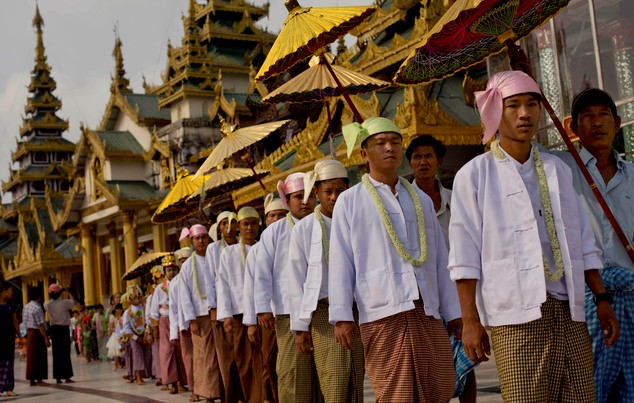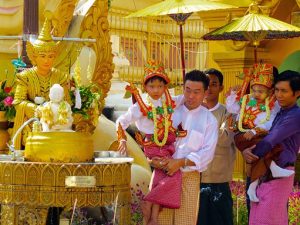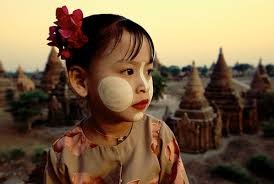Novitiation Ceremony

Novitiation ceremony is the unique characteristic of Myanmar. This ceremony usually celebrates during the school summer holidays in March & April before the water festival. In the Myanmar-Buddhist tradition, it is compulsory that every boy over eight years old. have to enter the Buddhist Order for a week or more as a novice. Over twenty year olds, they have to enter the Order again as Ordained Monk. At least twice in his life he becomes a member of the Order and sometimes even more. Their stay at a monastery is not considered a hardship because it is a blessing for the whole family as well as for the boys themselves. Monks or novices can stay as long as they wish in the monastery. A formal Novitiation ceremony involves, a parade around the pagodas on the first day with the boys all dressed up as princes. In the afternoon, their heads will be shaved and they will enter the Order. On the same day or the next there will be a feast for monks and invited guests. If sisters of the Novices have their ears pierced at the same time, they also are the important participants in the celebrations.

At the ceremony about a dozen cars drive orderly with musical troop following in roofless truck car, playing music and songs loudly, for dancer who takes place on the roof top with funny dance to amuse people. To pay homage to the Buddha they go to a famous pagoda at their town, parade clockwise to the pagoda, the parents take place at the front, the fathers carry the Alms bowl and fan and the mothers carry the casket containing robes. Next to them are Monks-to-be and Novices-to-be with their attendants holding Gold umbrella over them. A group of girls carry decorated offertories follow them in line. After visiting the pagoda they have to visit a nat (sprit) shrine to pay homage. Then finally, to the monastery, shave their hair and ask permission from the Abbot to be novice. As a novice he has to observe eight precepts and learn the Buddha teachings from his preceptor. Novitiation is the obligation for every parent, rich or poor, since it is believe to be a great meritorious deed.
Puppet Show

Puppetry is the most popular show in Myanmar arts and culture. The puppets are backed by expert manipulators who conversed, joked and related humorous stories through their puppets to the delight of the audience. At least four manipulators took charge of a character using handling rods and strings at the back of the curtain and give voice to the puppets. Puppets are beautifully dressed in lavish embellishment with gilded materials and semi precious gems, depending on their characters. Puppet shows usually take place at pagoda festivals, which are like country fairs. Marionette theatre is now mostly confined to tourist venues in Yangon, Mandalay and Bagan.
Thanaka

One of the things that the first time visitors notice sooner or later is the faces of the women of all ages and children coated with yellowish white substance. That substance on their faces is called “Thanaka”. It is truly an organic medication for skin conditions and some other purposes. For its fragrant aroma, it is good to]use as skin conditioner, perfume and cosmetic. It cools the skin and control oiliness, thus prevents pimples, as well as being an effective sun block. Its use originated with the women transplanting rice seedlings in the paddy fields. To protect from excruciating hot rays of the sun, the women wear thick layer of ‘Thanaka’ on their arms and faces. For the city girls Thanaka is applied for beauty, as natural make-up.
One could say Thanaka is the gift from the gods to Myanmar women. Because Thanaka trees thrive well on non-fertile soil of Upper Myanmar’s arid region, where there is little rain. Thanaka trees are perennials and the age must be 35 years old to be mature enough to yield good quality cuttings.
